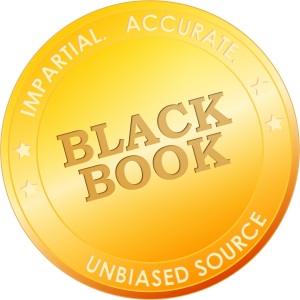Investors at a Crossroads: Remote Monitoring, Wellness Apps, and Oversold Health IT Categories Face a 2025 Funding Recession as ROI Fatigue Sets In
Investor sentiment is cooling sharply across once-hot digital health sectors.

LAS VEGAS, October 21, 2025 (Newswire.com) - According to a new Black Book Research pre-HLTH25 survey of 77 institutional and strategic investors controlling $22 billion in deployable capital, the digital health market is entering a correction phase as capital shifts from consumer-facing apps and devices to AI-driven operational platforms with measurable ROI.
Capital Rotation Accelerates
The survey reveals an unmistakable rotation:
69% of investors are reducing or exiting hardware-dependent or consumer-facing models.
72% cite time-to-ROI under 12 months as the dominant investment filter.
63% plan to boost allocations to automation and workflow-embedded AI technologies by mid-2026.
Funding for device-centric vendors dropped nearly 40% year-over-year, the sharpest decline Black Book has recorded since 2019, as investors abandon pandemic-era darlings in favor of enterprise efficiency tools.
Segments Losing Momentum
Remote Monitoring & Wearables
Once the poster child of telehealth innovation, remote monitoring is now seen as hardware-heavy and slow to scale. Only 23% of respondents believe standalone RPM models can reach profitability without embedded analytics or EHR integration by 2026.
Consumer Engagement & Wellness Apps
Fatigue has set in. Engagement rates remain below 25% after 30 days, while customer acquisition costs have doubled since 2022. Without payer or employer distribution, most wellness apps lack a viable path to revenue.
Legacy HIE & Data Exchange Vendors
Interoperability alone no longer excites investors. These vendors are viewed as utility-grade infrastructure, essential but low-growth. Consolidation into broader enterprise suites appears inevitable.
Segments Gaining Momentum
Ambient Clinical AI & Revenue-Cycle Automation
Solutions that convert documentation into structured data, enhance charge capture, and automate coding are delivering ROI within months. Providers cite measurable gains in efficiency, compliance, and margin recovery , exactly the short-cycle proof investors now demand.
Predictive Safety & Workflow Optimization Platforms
Hospitals facing workforce shortages are turning to AI-enabled patient safety analytics, virtual observation, and workforce automation tools. Investors identify this space as a "next-wave efficiency engine" backed by quantifiable labor savings and quality improvements.
The New Investment Hierarchy
Category | 2026 Investor Sentiment | Key Signals |
|---|---|---|
Stand-Alone RPM / Wearables | Cooling sharply | Hardware drag, long payback, integration friction |
Consumer Wellness Apps | Cooling | Weak retention, low reimbursement, oversupply |
Legacy HIE / Data Exchange | Consolidating | Utility margins, acquisition targets |
Ambient Clinical AI / RCM Automation | Rising fast | Proven efficiency, short ROI cycle |
Predictive Safety & Workflow Automation | Surging | Labor savings, measurable outcomes |
About the Survey
The Black Book Research 2025 Investor Outlook Survey was conducted in September 2-October 7, 2025 among private-equity strategics, growth-equity funds, corporate venture arms, and family offices active in health IT across North America and Europe. The findings offer a leading indicator of capital flows ahead of the HLTH25 conference.
Media Contact:
www.blackbookmarketresearch.com
Source: Black Book Research
